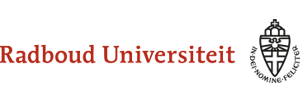American English Phonetics
Another American English Faculty Project
8.3 Place of articulation
The various places of articulation that are needed for the description of GA and AN consonants are given below, starting from the end of the speech tract (the lips) and going back to its beginning (the vocal cords).
| Bilabial | The two lips articulate with each other. Pronounce Pa, Ma, bah or bumpy. |
| Labio-dental | The lower lip articulates with the upper teeth. Pronounce GA or AN fee and – unless you have a Southern Dutch accent – AN wie, in which [ʊ] occurs. |
| Labio-velar | The lips articulate with each other, while at the same time the back of the tongue articulates with the velum. An example is [w] in GA well, which s pronounced with a bilabial as well as a velar near contact. |
| Dental | The tip of the tongue articulates with the upper teeth, as for [θ] in GA thing and [ð] in GA this, that. |
| Denti-alveolar | The blade of the tongue articulates with the alveolar ridge, while the tip touches the inside of the upper teeth. Examples are [d] and [t] in AN daad, [n] in AN kan, as pronounced by many speakers. |
| Alveolar | The tip and/ or blade articulate with the alveolar ridge. Tip-articulations are characteristic of GA [t,d,n,l] as in ten, dolly, Lenny. Blade-alveolars occur in GA sissy, easy, and AN Suze. Note that although the same label is used for GA and AN /s,z/, the tip is fairly high for GA [s,z], whereas for AN [s,z] it will generally touch the lower teeth. |
| Post-alveolar | The tip articulates with the rear edge of the alveolar ridge. An example is [n] in GA Henry. |
| Palato-alveolar | The blade of the tongue articulates with the alveolar ridge, while at the same time the front of the tongue is raised towards the hard palate, as for [ʃ] in GA shore, [ʒ] GA measure. |
| (Pre-)palatal | The (blade and) front of the tongue articulate with (the forward part of) the hard palate. Pronounce AN Anja and eitje, which contain pre-palatal [ɲ] and [c] respectively. Also, AN [ʃ,ʒ] as in gaasje, etalage are pre-palatal, and do not generally have the tip-raising characteristic of GA [ʃ,ʒ]. There is a gradual distinction between ‘pre-palatal’ and ‘palatal.’ The segments [j], as in GA yes or AN ja, and [ç], as in German nicht are normally just called ‘palatal.’ |
| Velar | The back of the tongue articulates with the soft palate. Prnounce GA key or AN kiek for velar [k] and AN eng for [ŋ], which is also velar. |
| Uvular | The uvula articulates with the back of the tongue. Western AN speakers have uvular [χ] (‘harde g’) in words like geel, chaos, dag. In some Western Dutch speakers, χ also occurs for /r/ in the coda, as in bord, kaartje, so in that in their speck the distinction between AN /r/ and /x/ may be neutralized in that position. |
| Glottal | The vocal cords articulate with each other as for [h] in GA how, or for whispered vowels. The glottal stop, [ʔ], may be heard before a vowel as in an emphatic pronunciation of AN Au!, as well as in GA Hawaii [həˈwɑːʔi]. |
